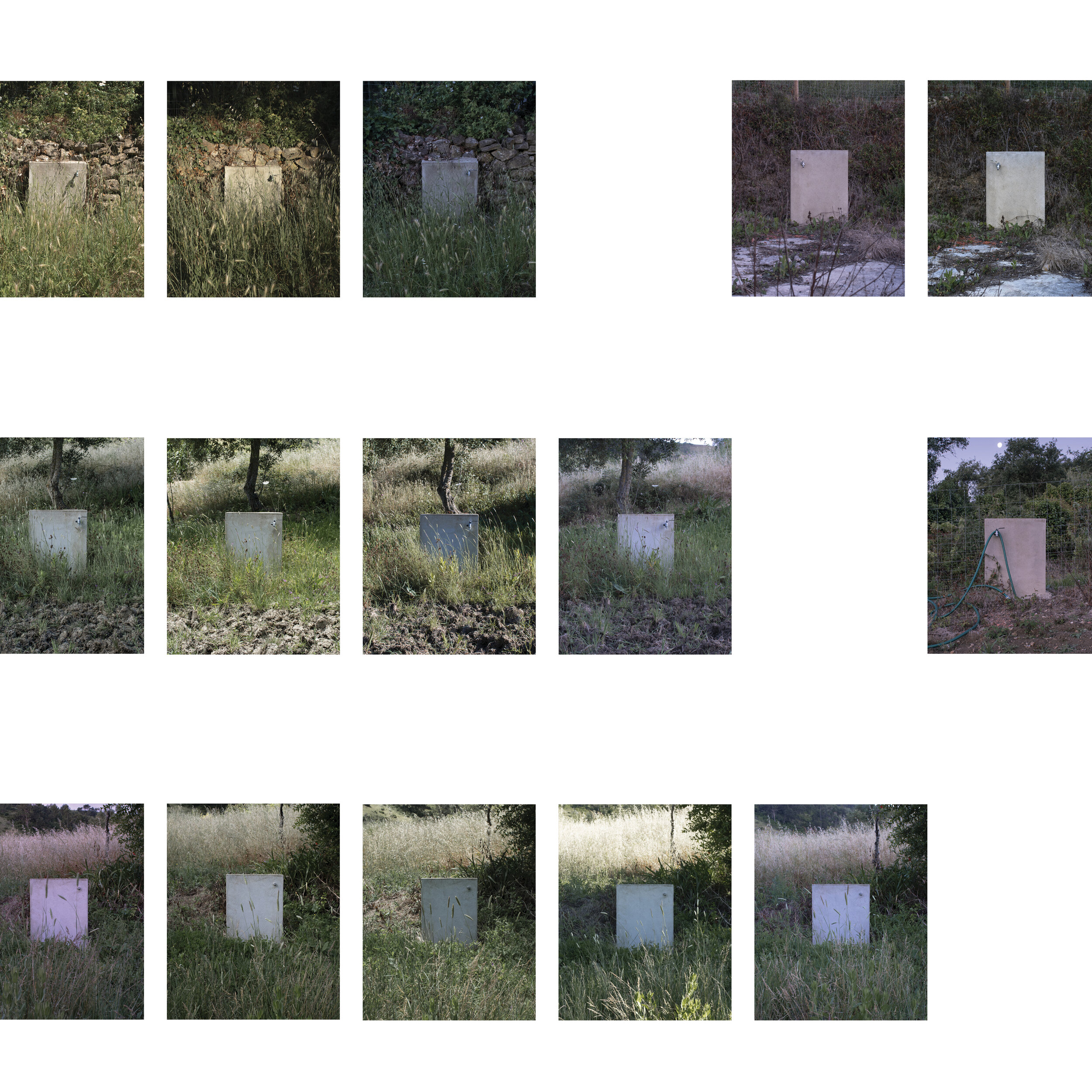







This project started during the state of emergency decreed in Portugal on March 18th, 2020, and that came into effect four days later, imposing confinement measures and travelling restrictions as a way to combat the virus SARS-CoV-2 which was spreading at alarming rates throughout Europe and the northern hemisphere.
Locked at home for all but the absolute essentials, I was faced with the everyday rut because I missed my routine and the thrill and social scene of downtown Lisbon, and above all my college environment. This particular predicament made me revisit the concept of the passage of time, and I was now focusing more on observing the sluggish rhythm of the circadian cycle.
In my backyard, where, due to the circumstances, I found myself circumscribed to, there are structures in the shape of parallelepipeds made out of concrete to contain and support water taps that were built around the property when we did some renovation work; I call them “monoliths”. I was already intrigued by them, and I intended to create an image or a series of images about these objects, but it was only when I found myself stuck at home that I started associating these “monoliths“ with the shadows they cast on the floor and the ones that were cast by their surroundings. In this project, I decided to explore the concept of cyclicity by creating twelve series of five images shot at five different times of the day: Sunrise, mid-morning, solar noon, mid-afternoon and sunset.
This project also deals with the increasing alienation caused by confinement by abstracting the observer through the repetition of the same shapes and compositions and an incremental removal of man-made structures in the frame. The first images portray a monolith surrounded by a watering can on one side and an iron rod on the other, anchored on a concrete floor. Behind it there is a house, chairs, a table and a window; these elements gradually disappear and in the last images the only man-made structures we see are the monolith and a wire fence amid the vegetation.
Lastly, this project also draws from the iconography of the tombstone and its connection to what appears to be the end of something but is actually part of a cycle. As the marker for something that ends but also triggers new beginnings. These monoliths are presented when we turn the page to a sunrise and they disappear when we turn the page from a sunset, ensuring that each end of one of the objects coincides with the last moments of light and is followed by a new sunrise.

